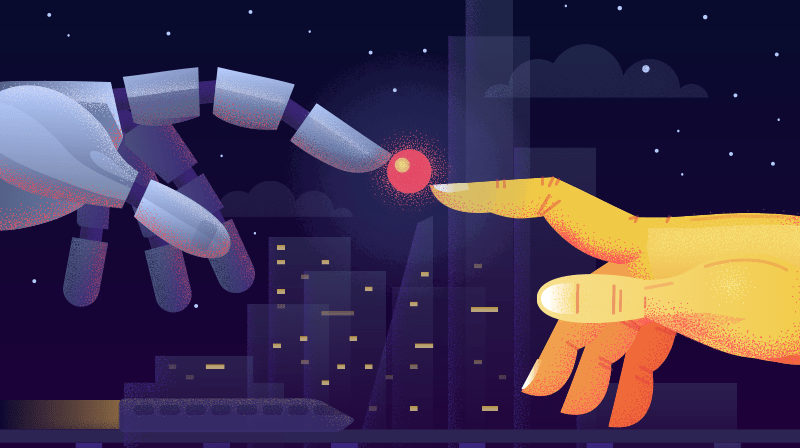Tech Trends for 2020
2020-01-17/ Natalia Ghiurau / News, Press releases, Uncategorized
The past years have been eventful and commenced a lot of discussion regarding improvements and challenges from 5G, to privacy, to AI and so on. For 2020 and the following years, we can expect to see these trends continue to gain momentum and also have new ones emerge. As these unfold and gain wider availability and deployment in the real world, it is important to acknowledge what there is to reap in order to grow and benefit from them, as individuals but also as businesses. Undoubtedly, there is a myriad of trends and predictions we can expect to see, theories that will be likely to standardize in the following years, and consequently I will only touch up on a few of them.
Privacy, Big Data
In the past decade, privacy has become a hot topic and the general public began to notice the enormous amount of data that is being collected from big companies. Competition between companies is the main reason for this and ensuring their place in the market triggers new challenges; one of them is the ability of networks to transport the outstanding volume of data, while still supporting new tech, but most important are the security challenges that are becoming more obvious. Not too long ago, the Facebook-Cambridge Analytica data scandal shed light on the importance of the privacy of our digital footprint because of its misuse. It is safe to say that this has been a major trigger that lead the EU to change its data protection requirements (GDPR).
5G
Another topic that is being broadly discussed is the already existing 5G which has promised bold changes, as well as wider availability. While having to support the increase in connected devices , 5G will provide greater bandwidth, ultra low latency and reliability.
More than the technical benefits this advancement brings, it will also represent a foundation where innovation can bloom in a multitude of industries. From medical services which will provide emergency care more efficiently, to enabling new technologies develop at a higher rate, such as self-driving cars or smart cities. On the same note, by 2025, the EU expects to provide uninterrupted 5G coverage for railways and major roads.
Wi-Fi 6 (802.11ax)
A completely different technology than 5G, Wi-Fi 6 has already been introduced but it is expected to be more widely deployed in 2020. Wi-Fi 6 has been originally built as a solution to the increasing number of devices, even more, it will be the best option specifically for high-density public environments, as well as for IoT deployments.
Technically, compared to the previous generation (Wi-Fi 5 or 802.11ac) Wi-Fi 6 will have a single-user data rate that is 37% faster, and it will also offer 4 times the throughput per user in crowded environments. The power efficiency will also improve, resulting in a boost in the device’s battery life.
Rather than considering it as competition for 5G, they can be seen as complementary as they can provide ideal end-to-end connectivity.
IoT (Internet of Things)
The rise of IoT can be considered as a direct result of the advent of the new technologies mentioned above, 5G and Wi-Fi 6, which provide better connectivity, therefore allowing a multitude of devices to be interconnected. Large numbers of IoT solutions are predicted to appear, and it is safe to state that it can be considered a sustainable solution due to a very large number of low-cost devices, sensors that consume very low amounts of energy that sustains long battery life.
Unfortunately, many of these IoT devices do not have strong security, which represents a vulnerable access point for attackers in order to compromise millions of connected devices and that can drive large-scale attacks, including DDoS.
AI (Artificial Intelligence)
While AI is known to be a new technology, it has in fact been around since the 50s, but only recently becoming widely acknowledged. AI is now a fast moving and quite unpredictable industry, though it will surely stay around and continue to grow in the following years. As it is used in different industries and different parts of companies, it is also becoming essential in order to optimize and predict services. For example, AI is used to provide better customer satisfaction for customer service tasks, through chat bots or virtual assistants.
AI faces data challenges, due to using deep learning techniques which are data hungry. Moreover, AI algorithms work properly when they have been trained and validated on massive amounts of data. This becomes a problem for companies to get access to the adequate types of data and the necessary volume as well, since it is difficult, time-consuming and expensive to collect real-world, accurate data. However, AI is expected to become less data-hungry because of many areas of AI research can now synthesize their own data.
Conclusion
All things considered, the future seems bright for new tech developments that are now advancing at a fast pace that only requires us to keep up. These are not only valuable in the digital industries, but can have a significant impact in any other industry if they are approached in an opportune manner.
When it comes to assuring the best experience regarding new technologies that mediate content and communication between mobile end users, telecom operators, service providers and so on, which will help in providing companies an improvement in their relationship with the customers. Netfors is specialized in creating high performance including their integration and customization for products such as SS7 SMS Centers, IP networks, Asterisk, etc.
Learn more about it and find the best solution for you at: www.netfors.com

